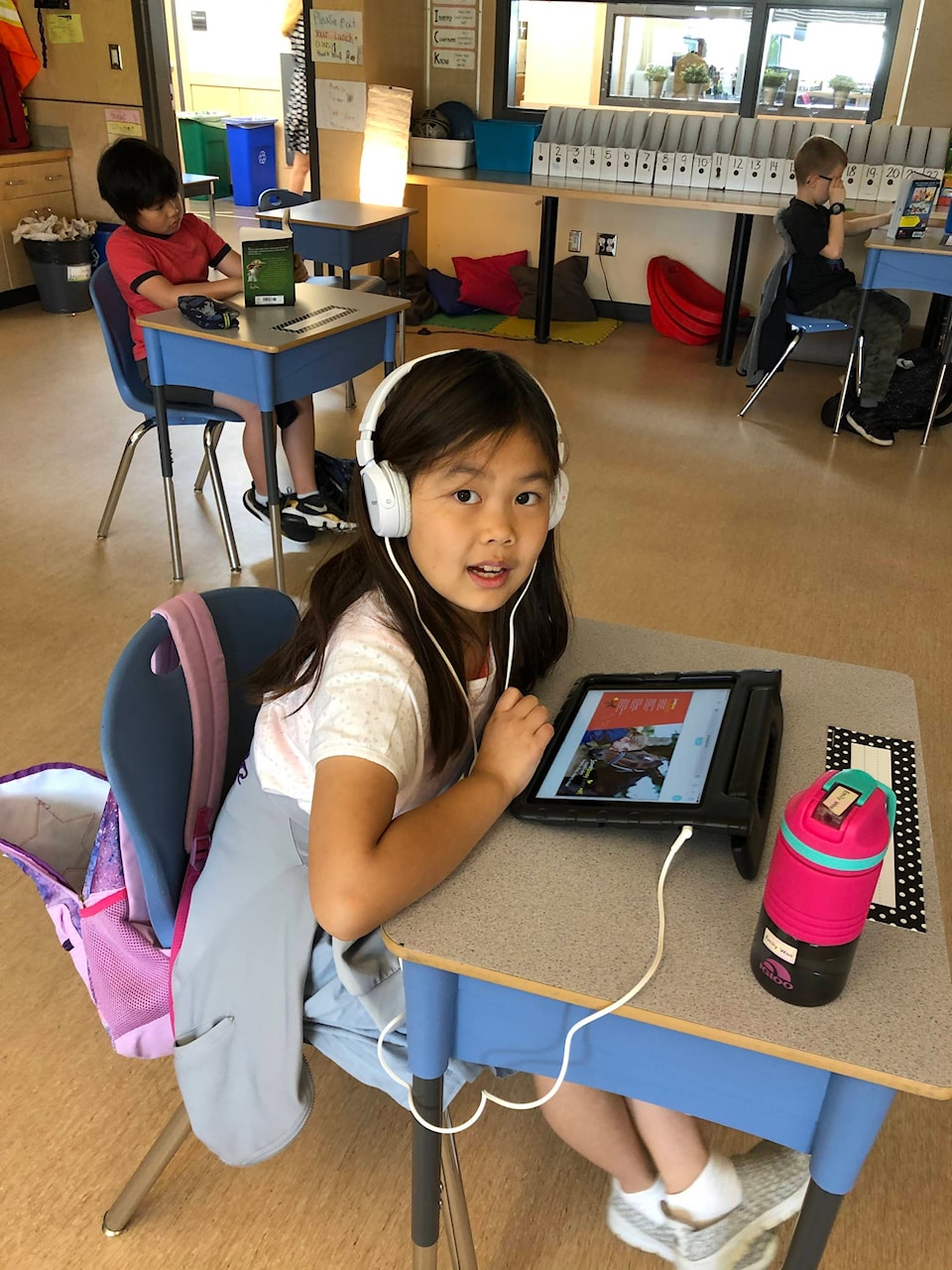Students went back to class in Langley Monday for the first time since March, but in much smaller numbers and returning to changed classrooms.
“There is life in the building,” said Kim Anderson, principal of Lynn Fripps Elementary in Willoughby.
That school, like several others around the community, has already been serving as a hub school for students of essential workers during the COVID-19 pandemic, which means the school staff had time to work out some of the procedures now in place.
Students from Kindergarten to Grade 5 are attending school two days a week, either Monday-Tuesday or Thursday-Friday. Those in Grade 6 and above will be in classrooms just once a week.
When they arrive, they find social distancing markers on the floors, new signs in the bathrooms, and staggered recesses, lunches, and dismissals to reduce the number of fellow students they could have contact with in the halls.
School rooms have been rearranged with desks or tables spaced out to allow teachers to move between students, and to create a good flow of children, said Anderson.
In order to maintain the required health and safety standards set out by the ministry custodians within the district have been redeployed to ensure all schools have someone available during the day and evening.
There are only about 6,200 of Langley School District’s more than 22,000 students attending schools for the last three weeks of June, as attendance is optional and high school students are still getting the bulk of their education online.
But Anderson said there’s laughter and communication in classrooms again.
“There are kids reading books, connecting with teachers,” she said.
One concern was whether younger children would be able to keep their distance and practice any physical distancing, but Anderson said so far things have been going well.
“In the classrooms, they know their spaces,” she said. Kids are learning to line up on markers, and there are few kids in the playgrounds at any one time.
It’s been a big process getting to this point, Anderson said.
“I can’t say enough around our staff, our teachers and our support staff,” she said.
The weeks before have seen staff at the school and district level preparing for the return, determining what resources were needed.
After it was announced in mid May that in-class instruction for students would resume June 1, staff worked to contact families from May 19-22 to learn if parents were going to send their kids back to the classroom.
School staff were able to reach families of about 21,000 of the approximately 22,000 students in the district, Gord Stewart, Langley’s superintendent of schools told the board of trustees at a meeting in May.
In addition, staff learned about 300 students would be requiring transportation.
But Stewart estimates the district typically has about 1,500 to 1,800 students who ride the bus to school.
Although only weeks remain in the 2019/2020 school year Stewart explained that having students return to the classroom part-time will help the Ministry of Education plan for September.
“I think they’re (ministry) trying to see what they can learn over these three or four weeks in terms of how that will inform [them] given the [preparation for] fall,” he said while appearing on camera remotely for the meeting.
At Lynn Fripps, Anderson said she isn’t looking that far ahead yet.
“I don’t know what September is going to look like,” she said. “I don’t think any of us know.”
Provincial authorities are also waiting to see how the return goes, and what the state of the pandemic is after the summer.
“We hope the June restart is part of something that will let us have an even stronger start in September,” B.C. education minister Rob Fleming said during a Tuesday, June 2 press conference.
